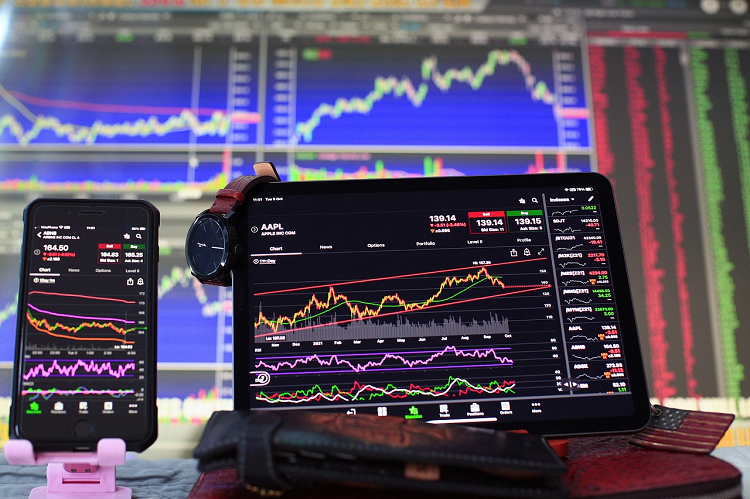As a trader, you are expected to learn several things to be successful. From understanding market trends to analyzing charts, these skills are essential in making profitable trades. However, there is another crucial aspect that is often overlooked — understanding key trading terms.
These terms serve as the foundation of your knowledge and will help you navigate the complex world of trading.
Table of Contents
Bull and Bear Markets
A bull market refers to a period of time when stock prices are rising, and investors have a positive outlook on the market.
On the other hand, a bear market is when stock prices decline, and investors have a negative sentiment towards the market.
Liquidity
The ease with which an asset can be purchased or sold without significantly altering its price is known as liquidity. While illiquid assets could be more difficult to sell rapidly, highly liquid assets are simpler to trade.
Some players in the trading arena, especially crypto market makers, help maintain liquidity by buying and selling assets regularly. They do so by placing bids and asks in the market, ensuring that someone is always willing to buy or sell.
Volatility
Volatility refers to the rate and extent at which an asset’s price changes. Highly volatile assets can provide significant returns but also carry higher risks. On the other hand, low-volatility assets may be less risky but offer lower potential returns.
The level of volatility is a crucial aspect to consider when choosing which assets to trade.
Long and Short Positions
When you enter a long position, you’re buying an asset with the expectation that its price will rise. Essentially, you’re investing because you believe the asset’s value will increase, allowing you to sell it at a higher price in the future.
On the flip side, taking a short position means you’re betting that an asset’s price will fall. To do this, you borrow and sell the asset at its current market price. Then, if the price drops as you expect, you can buy the asset back at the lower price, return what you borrowed, and keep the difference as your profit.
Trade Volume
Trade volume measures the amount of an asset traded over a specified period. It’s a crucial indicator of the asset’s liquidity and market activity.
High trade volume suggests strong interest and activity in the asset, indicating a healthy market. Conversely, low trade volume can indicate lesser interest or uncertainty.
Traders often use trade volume analysis to predict future price movements, making it an essential factor in developing trading strategies.
Resistance and Support Levels
Resistance and Support Levels are like psychological barriers in the trading world, affecting how you view an asset’s price movement.
Support is the price level where buying interest is significantly strong and could prevent the price from falling further. Think of it as a safety net. Resistance, on the other hand, is where selling pressure is heavy enough that it could stop the price from rising more. It’s like a ceiling that prices struggle to break through.
Margin and Leverage
Margin and leverage are essential in trading, allowing you to control larger positions with less capital. Think of margin as a loan from your broker, allowing you to amplify your trades.
Leverage, on the other hand, increases your potential returns but also your potential losses. It’s like using a lever to lift a heavy object — the lever magnifies your effort, just as leverage magnifies your investment’s impact.
Technical Analysis
Technical analysis evaluates market trends and makes trading decisions based on price charts and statistical indicators. It can help traders identify potential entry and exit points and track the strength of market movements.
To effectively use technical analysis, understand the indicators and their limitations. These indicators include moving averages, support and resistance levels, and trend lines.
Fundamental Analysis
Fundamental analysis involves assessing a company’s financial health and the economic and financial factors that could influence its future performance. This analysis aims to determine the intrinsic value of a company’s stock to make investment decisions.
It considers various factors, including earnings, expenses, assets, liabilities, and external elements like the overall economy, industry conditions, and government policies.
Risk Management
Risk Management involves identifying, assessing, and prioritizing potential financial losses in trading and investing. It also entails applying appropriate strategies to minimize, control, or eliminate unacceptable risks.
Essential techniques include setting stop-loss orders, diversifying portfolios, and carefully managing leverage. This approach is crucial for sustaining long-term profitability in the volatile world of financial markets.
Emotions and Psychology
Your emotions and psychology play a pivotal role in investment decisions. Understanding the psychological aspects influencing market perceptions and behaviors is essential. Fear and greed can drive markets to extremes, leading to overvalued or undervalued assets.
Mastering your emotions by maintaining discipline and sticking to your investment strategy is key to navigating these psychological pitfalls and achieving long-term success in investing.
Continual Learning
Continual learning is your pathway to staying ahead in the fast-evolving financial markets. It involves regularly updating your knowledge and skills through various resources such as books, courses, seminars, and market analysis.
This dedication to learning helps you make informed decisions, adapt to new trends and technologies, and ultimately, enhances your investment success.

